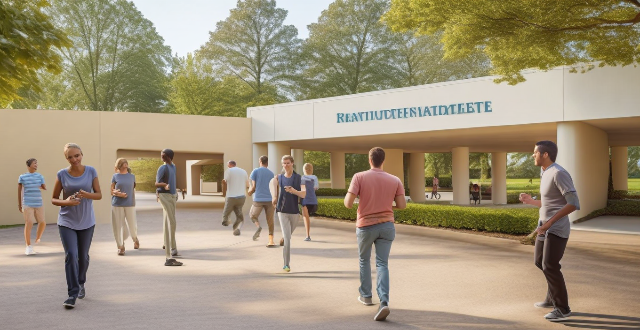Sports rehabilitation centers play a crucial role in offering preventative care services to help individuals avoid future injuries. They provide comprehensive assessments, customized exercise programs, education and training, utilize advanced equipment and technology, and collaborate with healthcare professionals to improve overall health and reduce the risk of re-injury.

Do Sports Rehabilitation Centers Offer Preventative Care to Avoid Future Injuries?
Yes, sports rehabilitation centers do offer preventative care to avoid future injuries. This is an essential part of their services as it helps athletes and individuals recovering from injuries to return to their physical activities without the risk of re-injury. The preventative care measures taken by these centers are designed to improve overall health, enhance performance, and reduce the likelihood of future injuries. Here's a detailed overview of the preventative care services provided by sports rehabilitation centers:
1. Assessment and Evaluation
The first step in preventing future injuries is a comprehensive assessment and evaluation of the individual's current physical condition, medical history, and lifestyle habits. This helps identify potential risk factors and areas that need improvement or strengthening.
Key Areas Evaluated:
- Physical Examination: Checking for muscle imbalances, joint stability, and flexibility.
- Medical History: Reviewing past injuries, surgeries, and chronic conditions.
- Lifestyle Habits: Analyzing diet, sleep patterns, stress levels, and exercise routines.
2. Customized Exercise Programs
Based on the assessment, sports rehabilitation centers develop customized exercise programs aimed at improving strength, endurance, flexibility, and balance. These programs focus on targeted areas identified during the evaluation to reduce the risk of future injuries.
Types of Exercises Included:
- Strength Training: To build muscle mass and support joints.
- Flexibility Training: To improve range of motion and prevent muscle strains.
- Balance Training: To enhance stability and reduce the risk of falls.
- Cardiovascular Exercises: To improve overall fitness and endurance.
3. Education and Training
Sports rehabilitation centers also provide education and training on injury prevention techniques, proper warm-up and cool-down procedures, and safe exercise practices. This knowledge empowers individuals to take an active role in preventing future injuries.
Topics Covered:
- Injury Prevention Techniques: Strategies to avoid common sports-related injuries.
- Proper Warm-Up and Cool-Down Procedures: Importance and techniques for preparing your body before and after physical activity.
- Safe Exercise Practices: Guidelines for performing exercises correctly to minimize the risk of injury.
4. Equipment and Technology
Sports rehabilitation centers often use advanced equipment and technology to aid in injury prevention efforts. This includes tools for monitoring progress, assessing movement patterns, and providing feedback on form and technique.
Examples of Equipment and Technology Used:
- Motion Capture Systems: To analyze movement patterns and identify areas of improvement.
- Force Plates: To measure force distribution during exercises and assess balance.
- Wearable Devices: To track heart rate, calories burned, and other metrics during workouts.
5. Collaboration with Healthcare Professionals
Sports rehabilitation centers work closely with healthcare professionals such as physicians, physical therapists, and athletic trainers to ensure a well-rounded approach to injury prevention. This collaboration ensures that all aspects of an individual's health are considered when developing preventative care plans.
Benefits of Collaboration:
- Holistic Approach: Addressing both physical and mental aspects of health.
- Continuity of Care: Ensuring seamless transition between different stages of recovery and maintenance.
- Expertise Sharing: Combining knowledge from various fields to create effective preventative strategies.
In conclusion, sports rehabilitation centers play a crucial role in offering preventative care services to help individuals avoid future injuries. By providing comprehensive assessments, customized exercise programs, education and training, utilizing advanced equipment and technology, and collaborating with healthcare professionals, these centers contribute significantly to improving overall health and enhancing performance while reducing the risk of re-injury.